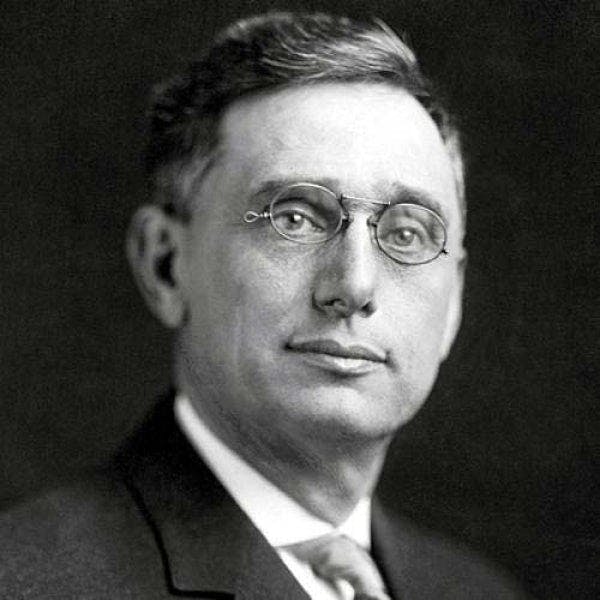
A former editor of this publication, Franklin Foer, has asserted that The New Republic “invented modern liberalism.” Another ex-editor, Hendrik Hertzberg, has contended, contrariwise, that there’s a case to be made “that civic republicanism, as much or more than liberalism, was TNR’s founding creed.”
Actually, Foer might have been on firmer ground had he argued that The New Republic invented modern American liberalism. The historical record suggests that what he probably means by “modern liberalism” was birthed at the end of the nineteenth century by a group of thinkers in England called the “new” or “left” liberals, following the lead of their illustrious mid-nineteenth century precursor, T.H. Green.
Green introduced the concept of “positive liberty”—the idea that true freedom did not simply involve, as the early liberal theorists had it, the absence of deliberate physical restraint on individual action. Freedom also requires possessing the means to lead a decent and fulfilling life. L.T. Hobhouse and J.A. Hobson, the two leading exponents of the new liberalism (a.k.a. “social liberalism”), added a communitarian dimension to liberal theory, observing that people were not just separate, self-driven individual entities, but also participants in a social order involving interdependence and mutual obligation.
Society had a responsibility to care for all its members, and most especially its disadvantaged ones, the new liberals maintained. Their ideas laid the predicate for the twentieth-century welfare state. The British political theorist Michael Freeden expressed the thought that social liberalism was the British version of Scandinavian social democracy. The exact extent of cross-pollination between British left liberals and American Progressive thinkers of the early twentieth century is open to debate, but Freeden noted significant intellectual overlap between the two. He credited The New Republic and its founders—Herbert Croly, Walter Lippmann, and Walter Weyl—with exploring “the links between liberty and community, a rare theme in American liberal discourse.”
Croly’s overriding political goal was to centralize regulatory power at the federal level, an objective he shared with ex-President Theodore Roosevelt, who had concluded that trying to use antitrust enforcement to reduce the scale of business conglomeration, as advocated by decentralist Louis Brandeis, was futile. But Croly’s aspirations for the “New Nationalism” Roosevelt advocated in his 1912 run for the presidency went way beyond deploying federal regulation to bring power-hungry capitalists to heel. He also fantasized that creating a strong national government would ipso facto result in the emergence of a cohesive national community that could replace the small “island” communities being rapidly depopulated by advancing urbanization.
It is here that Croly’s fundamental republican vision, along with its historical limitations, come into view. Although, despite their republican leanings, the Founding Fathers did not provide for direct citizen involvement in political affairs, the New England town-meeting model served as a viable substitute, as Tocqueville observed—until it was rendered obsolete. Republican nationalist Croly remained committed to ensuring that the political economy of the nation be one that produces assertive citizens with a driving concern for the common good. Even as he proselytized for such a system, however, the activist “producer ethic” of early America was being upended by the new model of passive consumerism. Both Lippmann and Weyl, in a very real sense, went over to the enemy, advocating consumer society as the desirable path for America’s future.
Croly’s project of building a strong national government has been eminently successful, but it was naïve of him to think that this achievement would necessarily produce an actual continentwide community. A nation of any significant size cannot feasibly constitute a genuine “community,” but only (in Benedict Anderson’s inventive phrasing) an “imagined” one. Yet even the status of imagined community has been difficult for the American nation to sustain, given its longstanding and deep-seated racial division. “Egalitarian liberalism”—the phrase the political philosopher Michael Sandel uses to describe America’s version of social liberalism—has some outstanding achievements to its credit (Social Security, civil rights, Medicare), but its underlying ethic of mutual social obligation has not taken deep root in the American psyche. The withering of local community, together with the attenuation of the civic ethic, doomed America’s once-vibrant republican tradition to a long period of retreat, though it has recently begun showing signs of a possible resurgence.
There is a striking similarity between the political challenges we face now and those Croly and his cohort confronted a century ago, the most noteworthy being the prevailing scandal of gross economic inequality. The solutions advocated by The New Republic of today will frequently differ from those favored by Croly—for instance, we will call for significant political and economic decentralization, à la Brandeis—but they will all involve, as did his, an interplay between the two political traditions of liberalism and civic republicanism.
* A previous version of this article wrongly identified the subject of the photo. It is Louis Brandeis, not Herbert Croly.